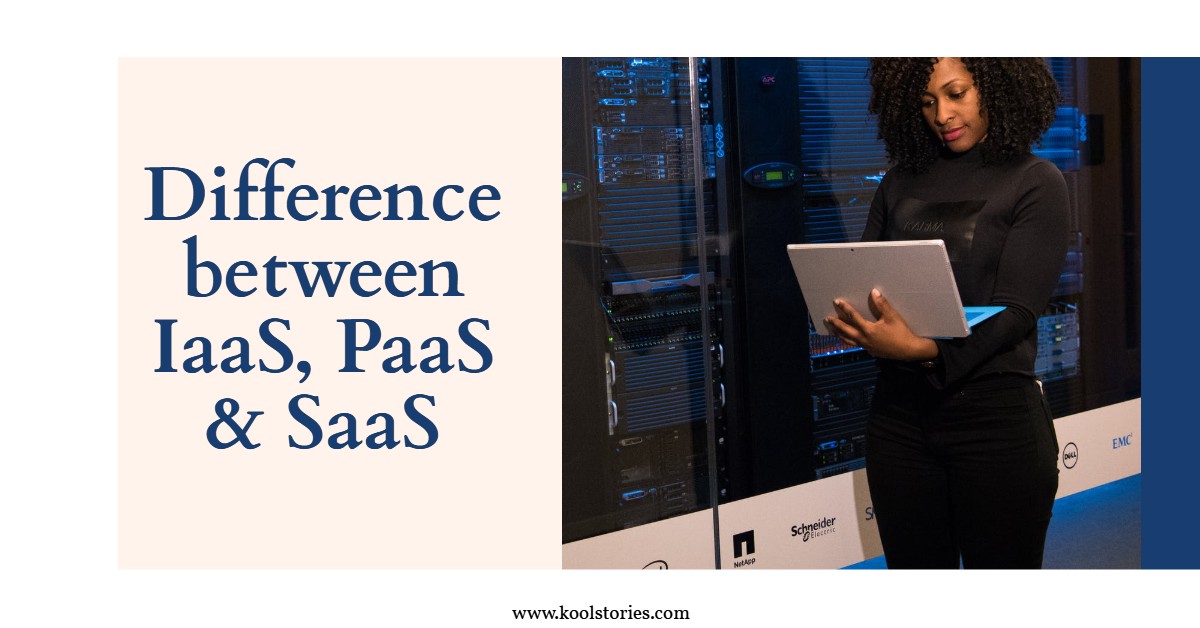Difference between IaaS, PaaS & SaaS
Cloud computing is the norm. It has completely revolutionised the data storage, sharing and compute services. If you are planning to take your business on the cloud, you must be familiar with the architecture it follows. The best skill-sharing platform in 2021 might be the right place to start, if you are not. Service models are a famous chunk of the vast cloud computing architecture. You need to have a clear understanding of these models. Basically, there are three service models of cloud computing under which the rest of services fall. One should be able to differentiate between them on a conceptual basis. Having a basic understanding of them makes it easier to achieve business goals.
IaaS(Infrastructure as a Service): The whole infrastructure is at your doorstep. Back in time, the data was only stored at huge data centres. Managing them was no easy feat, and that too for a small organisation. Before IaaS came into the picture, the cloud was a mere mass of droplets floating in the sky. Emergence of cloud in IT brought many services (making management an easy task). What exactly IaaS does? The answer is simple. Manage OS, middleware and applications without taking the headache of buying a personal server or setting up a datacenter. It reduces the cost, time and efforts. You pay only for what you use and only for the time being you need it. The complete infrastructure is managed by a cloud service provider like GCP(Google Cloud Platform) AWS (Amazon Web Services)or Microsoft Azure.
How business can use IaaS:
● Testing
● Application deployment
● Hosting websites
● Backups and storage
● High-efficiency computing
Advantages :
1. An economical option for startups.
2. The complete infrastructure is at your disposal. It's time to say goodbye! To an external IT contractor.
3. Reduces the workload of an IT infrastructure; therefore, the organisation can focus on business requirements.
4. Disaster recovery: The app and data can be accessed even during a catastrophic event. All you need is a perfect SLA(Service Level Agreement).
5. Increased Reliability: It is the whole sole responsibility of the service provider that your infrastructure is up to the mark and reliable. You need not deal with the issues of software or hardware upgradation.
6. Security: Better security than your home if you have an SLA in hand.
An essential part of building infrastructure is cybersecurity. It is one of the most coveted professions in the tech world, and the best way to get started is by exploring cybersecurity programming languages.
PaaS(Platform as a Service): This type of cloud service equips you with the development-deployment environment on the cloud itself. You have all the resources you need to create an application be it simple or an enterprise level. Just an internet connection and you are all set to dive into the pool of resources. The resources are available with the cloud service provider. Remember you pay only for what you use. Nothing more or less than that. Besides the infrastructure PaaS also includes middleware, deployment tools, DBMS etc. It supports a complete lifecycle of web application and saves you from the complexities of buying and management of software licenses. Create, manage and deploy. You only manage the applications and services you develop, and rest is handled by cloud service provider.
How business can use PaaS:
● Provides schema for development
● Business Analysis
Advantages:
1. Reduction in development time and staff.
2. Management of the web app lifecycle and geographical distributed team made easy.
3. Complete utilisation of development, BI(Business Intelligence), and analytical tools.
SaaS (Software as a service): You have often come across or heard some tools like Gmail or Microsoft Office 365. Unknowingly you are using SaaS since these are the most common examples of SaaS. As the name of the service suggests the complete software is provided to you by the cloud provider. There is actually a third-party provider that is hosting the software on a remote server. just rent the service of an app and your customers are good to connect with you via the internet.This is the whole concept of IoT.
You need not have to worry about the infrastructure, middleware, the data and all that stuff. You are ready to go with your app.No need of hiring an IT specialist for downloading software on every computer in the company. The worries of keeping the software up-to-date are gone.
How business can use SaaS: If you have an email account you are already using this service. But from a business point of view you can rent applications like CRM (Customer Relationship Management) or ERP(Enterprise Resource Planning) and pay according to the usage or subscription chosen.
Advantages:
1. Business applications made affordable.
2. Automatic scaling according to usage.
3. Easy accessibility of app data.
4. No special expertise required.
| IaaS | PaaS | SaaS |
You manage | ● Application ● Data ● Runtime ● Middleware ● OS
| ● Applications ● Data | ● Nothing |
Other manage | ● Virtualisation ● Server ● Storage ● Networking | ● Runtime ● Middleware ● OS ● Virtualisation ● Server ● Storage ● Networking
| ● Everything |
Examples | ● AWS EC2 ● Magento 1 Enterprise Edition (Magento Commerce)
| ● AWS Elastic Beanstalk ● Magento Commerce Cloud (also known as Magento Enterprise Cloud Edition) | ● Big Commerce
|
Post Your Ad Here

Comments